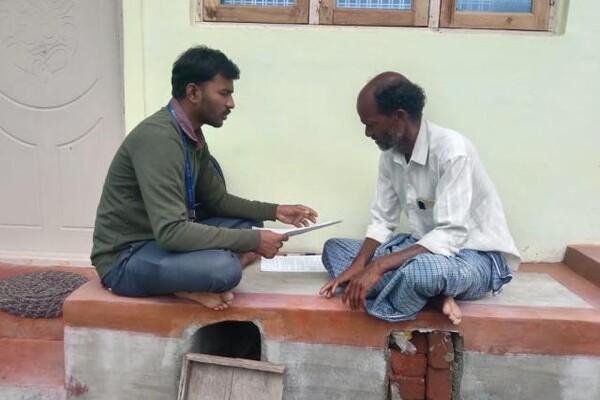Mobile Menu
- Education
- Research
-
Students
- High School Outreach
- Undergraduate & Beyond: Community of Support
- Current Students
- Faculty & Staff
- Alumni
- News & Events
- Giving
- About

Erin Howe

A university student enters the doctor’s office, hoping to receive a note exempting them from an exam tomorrow because they are unprepared for the test. What should the doctor do?
Doctors face scenarios like this on a regular basis. With the help of standardized patients, medical students do too. The Standardized Patient Program (SPP) helps prepare students to meet the responsibility of patient care while promoting the importance of the relationship between a health care professional and a patient in a way that respects that patients’ preferences, needs and values.
“Our strength is in communication. We try to accurately portray a patient and respond to the student in a way that feels honest and genuine,” says Karen Delaney-Laupacis, a standardized patient trainer. In the case of a student seeking a doctor’s note, one approach could be for the physician to work with the patient on an alternate solution – such as talking with his or her professor.
SPP re-creates the real world for students by using highly trained people to represent patients, their family members and other health professionals. Every element of the scenarios created by the program must reflect reality — from the patients’ appearances to the physical environment.
“The more credible we can be, the more accurate reflection we will get of that student’s ability,” says Delaney-Laupacis.
Standardized patients are used in teaching at all levels of medical education, from first-year medical school through residency, fellowship and continuing professional development. They help students learn basic skills like interviewing or physical exam techniques, and more advanced skills, like delivering bad news or providing counseling to terminally ill patients.
“The more often you get to practice these skills,” says Delaney-Laupacis, “The more comfortable and confident the student will feel when they have to do something like deal with an angry patient or deliver bad news.”
Standardized patients are also used to evaluate students, like in the Objective Structured Clinical Examinations, which test undergraduate medical students’ clinical skills in areas like communication or performing various medical procedures. They also help during licensing exams for various medical specialties.
“Practicing clinicians who face highly charged situations like error disclosure or complex team challenges embrace the opportunity to ‘rehearse’ or ‘tune in’ with standardized patients,” says Diana Tabak, SPP’s Associate Director. “These opportunities provide the clinicians the option to focus on themselves and their colleagues while knowing the patient will suffer no harm. We often say: ‘bring us your nightmares to recreate for you’.”
The key to being a good standardized patient isn’t great acting. According to Tabak, the most critical element is the ability to be an active listener and to focus on the student. These abilities ensure standardized patients provide students with immediate, honest feedback.
“We want to give learners opportunities to try a whole bunch of different ways to connect with their ‘patients’ to see what feels most natural and effective for them,” says Delaney-Laupacis. “If we can see a student may be struggling during an interaction with an SP, we might ask the student ‘what are some different approaches you might try?’ There’s no single way to communicate that works for everyone. If the learner is saying something that doesn’t feel right to them, the patient will pick up on that, too.”

